|
|
|
|
|
TO ORDER: Call 903-558-1007 |
Its mid summer 2022 and we are adding to our selection of exotic electronic sensors MADE IN USA that you will enjoy experimenting with and using. We have sensors for detecting magnetic fields, VLF Sferic Electrical Waves, VLF Sferic Magnetic Waves, Seismograph Pickup Units, and more. We also have lightning sensors, audio pre-amplifier modules, Audio and Radio Noise Sources, Tuned radio noise Sources, Radio Reception Boosters and more!
More Sensors are Coming soon!:
Ultra Low Frequency Directional Magnetic Sferic Sensor to detect Tweeks and Whistlers with less VLF static reception.
Super-Magnetometer for detecting small changes in earth's magnetic field and for detecting moving cars at a distance up to 20 feet away, etc.
DC Magnetometer Sensor. Outputs a steady amplitude signal, unless a micro magnetic field change occurs. For monitoring the DC component level of earth's magnetic field.
Miniature Metal Detector Sensor. Detects small metal objects. Sensor to be water-proof.
If you are or know someone interested in electronics, then share our weblink! www.stormwise.com Thanks!
| Item | Part # | Price | |
|---|---|---|---|
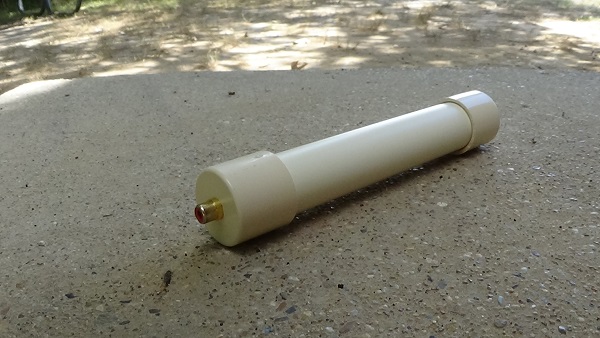 | ULF-VLF Magnetic Wave Sferic Sensor The Model TW-1 turns any tape recorder or audio amplifier into a powerful Very Low Frequency receiver. It allows you to clearly listen to the sounds that earth and near-space makes. You will hear all kinds of atmospheric magnetic noise called "Sferics" in the frequency range of 100 Hz - 15 KHz. Connect to the mic input of any audio amplifier or audio recorder device to listen to the magnetic sferic sounds of the earth and sky. The TW-1 is also tunable just like an audio filter if should you desire to narrow the receive band down to anywhere between 100 Hz to 10 KHz. Lightning produces powerful VLF Sferic magnetic waves that can span the earth, and even echos can be received. You will hear world-wide lightning flashes, Tweeks, Whistlers, Dawn Chorus, and many other odd natural VLF radio emissions. See the video for how to use and to hear example signals received. TW-1 video. | TW-1 | $ 60.00 + $ 10.00 S/H SEE OUR E-BAY LISTING https://www.ebay.com/itm/185492215348?autorefresh=true |
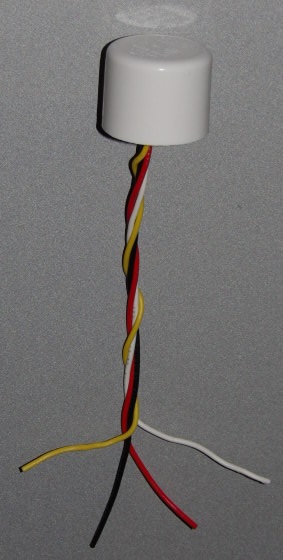 | VLF Sferic Wave Receiver This sensor allows you to listen to the sounds that earth and near-space makes. You will hear all kinds of atmospheric electrical noise called "Sferics" in the frequency range of 20 Hz - 20 KHz. Connect to any audio amplifier or audio recorder device to listen to the electrical sounds of earth and sky. Lightning produces powerful VLF Sferic Waves that can span the earth, and even echos can be received. You will hear world-wide lightning flashes, Tweeks, Whistlers, Dawn Chourus, and many other odd natural VLF radio emissions. See below on this page for how to use. | SR-1 | $ 20.00 |
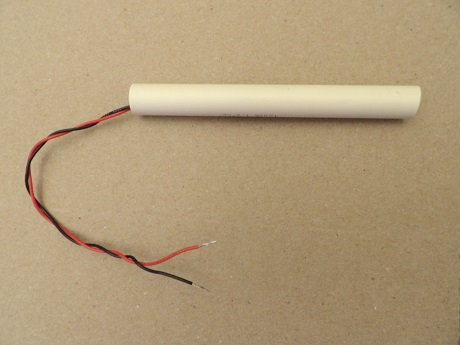 | MICRO-MAGNETOMETER and SEISMIC SENSOR. 5.5 inches long. This POWERFUL SENSOR works great as a Seismograph Pickup Sensor, and can also detect movement of itself via the earth's magnetic field. It will directly drive data loggers (with millivolt sensitivity) directly without needing any power source or any extra amplification. Its that powerful! Easy seismograph build. Earthquake Sensor. This powerful sensor allows you build a simple 1 or 2 transistor seismograph to detect earthquakes, or use the circuit to detect sudden changes in earth's magnetic field, or motion through field. You can detect local and distant earthquakes with this unit. It will also detect the magnetic field disturbances of moving cars up to 5 feet away. You can also connect it to any stand-alone digital data logging OHM meter, and you will see resistance changes logged when local earthquakes occur, no extra transistor circuit needed. Comes with circuit plans though if you want to build a sensitive seismograph for detecting earthquakes over 1000 miles away. Build it and a voltmeter will swing wildly when a magnet is brought near this sensor. Use it to build many kinds of sensors and alarms. It can also hear VLF Tweeks when connected to an audio amplifier having mic-level input sensitivity (though we have much better sensors for detecting VLF tweeks, this one -can- do it too)! Will produce over 2 volts AC when a magnet is spun up near the sensor. Can detect a moving magnet over 5 feet away! Build the Pitcher Seismograph! Its easy! | MMAG-1 | $ 20.00 |
 | Just like our MMAG-1 above, but its 12 inches long for extra super powerful pickup. Build the Pitcher Seismograph! Its easy! | MMAG-2 | $ 30.00 |
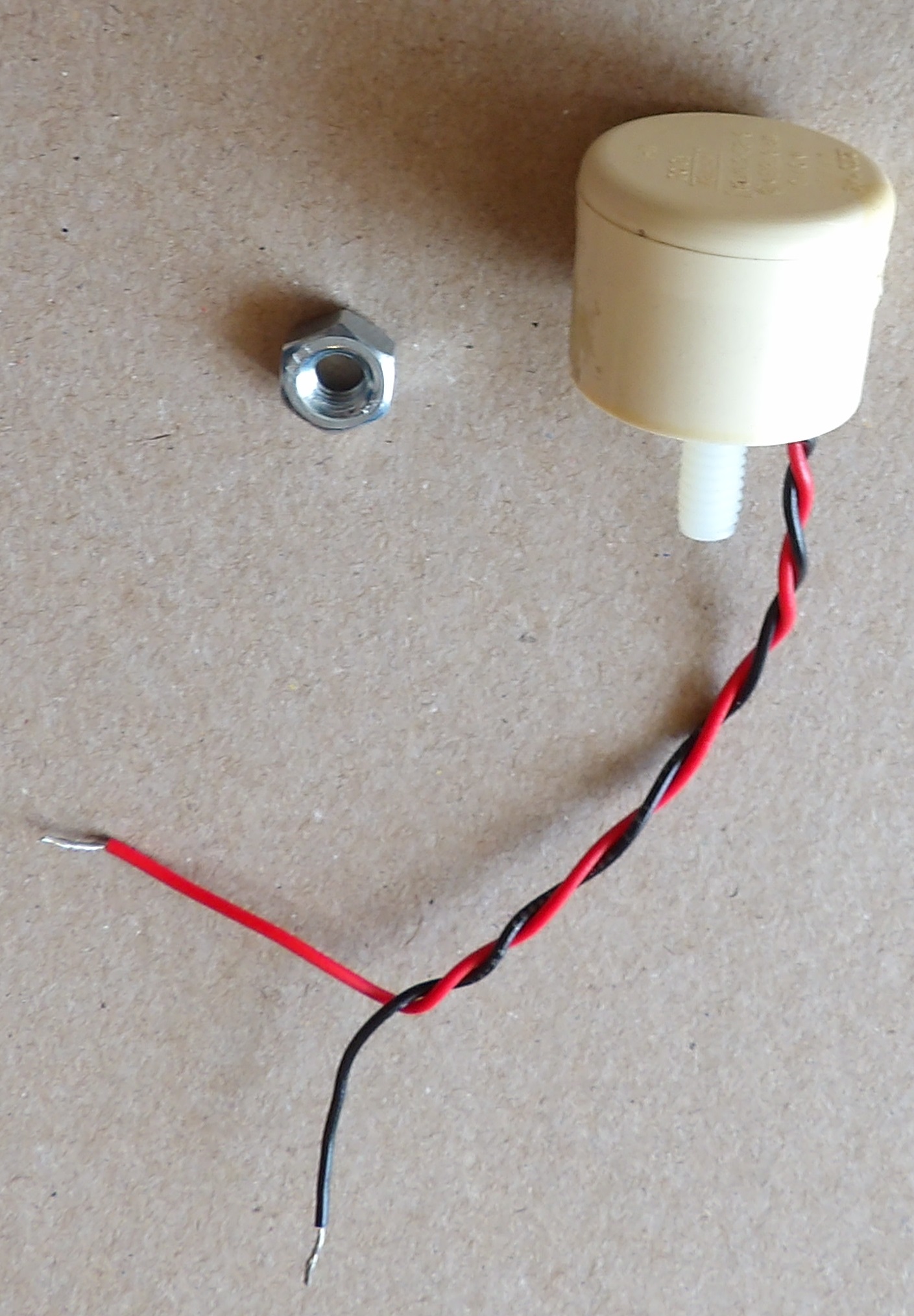 | Seismograph Pickup Sensor. Easy seismograph build. Earthquake Sensor. This powerful sensor allows you build a simple 1 or 2 transistor seismograph to detect earthquakes without using complex chips! You can detect local and distant earthquakes with this unit. You can also connect it to any stand-alone digital data logging OHM meter, and you will see resistance changes logged when local earthquakes occur, no extra transistor circuit needed. Can be connected directly to a PC data logger such as the DI-2008 from Dataq. No extra power or amplifier needed, will drive the data logger directly. Comes with circuit plans though if you want to build a sensitive seismograph for detecting earthquakes over 1000 miles away. Build it and a voltmeter will swing wildly when a magnet is brought near this sensor. Use it to build many kinds of sensors and alarms. Sensor is waterproof. Build the Pitcher Seismograph! Its easy! | SPU-1 | $ 20.00 |
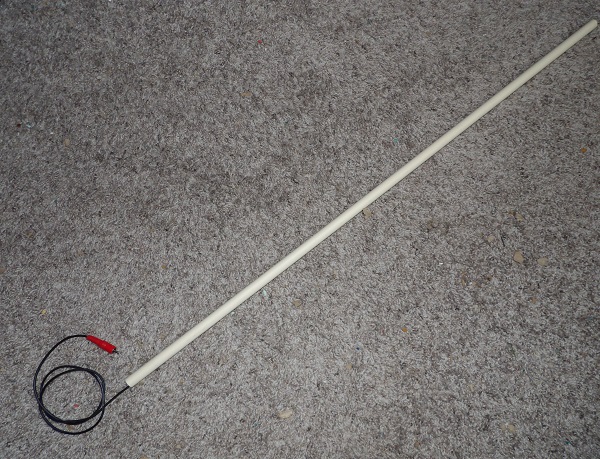 | POWERFUL MAGNETOMETER 24 inches long.
This sensor detects small changes or motion of earth's magnetic field. You can use it to study earth's magnetic field by connecting a PC Data Logger such as the DI-2008 from Dataq Instruments. The sensor picks up 0.01 Hz to 30 Hz fields. It is not sensitive to DC (static magnetic) fields but rather picks up slowly changing fields. You can build a 2 transistor circuit that will sense movement of earth's magnetic field and show it on a meter. You can use it to detect moving cars and trucks up to 20 feet away. Each passing vehicle has a unique magnetic profile. The sensor can also detect buried or hidden metal objects. The sensor will drive data loggers having millivolt input sensitivity so no extra amplification is needed. The magnetometer sensor can work as a seismograph directly, without any mass or moving parts or power needed for it. When the earth shakes, it moves the sensor in earth's magnetic field along with the ground shake. The direct unaltered waveform of the earthquakes can be recorded on a PC data logger. Some earthquakes can actually modulate earth's magnetic field directly, without local shaking being detected first. This is instant earthquake detection via electromagnetics when this condition occurs. You will see the distant quake detected instantly on your data logger, then a few minutes later the physical shaking waves arrives and are then also detected. | MMAG-3 | $ 75.00 |
 | Audio Preamplifier This sensitive audio preamplifier can drive a small speaker or headphones. Very sensitive input. High Z. Part Number APA-1. See below on this page for how to use. | APA-1 | $ 20.00 |
 | ULF Sferic Wave Magnetic Wave Sensor Plug this 24 inch long sensor directly into the microphone jack of a tape recorder or portable audio amplifier and you can then listen to the magnetic wave sounds that earth and near-space makes. You will hear all kinds of atmospheric magnetic wave noise called "Sferics" in the frequency range of 100 Hz - 5 KHz. Connect to any audio amplifier or audio recorder device to listen to the magnetic wave sounds of earth and sky. WATCH THE SHORT VIDEO CLICK HERE! Designed to reject the powerful lightning sferic waves above 5 KHz, so to enhance the beautiful sounding lower frequency ULF emissions the earth makes. You will hear lightning flashes, Tweeks, Whistlers, Dawn Chourus, and many other odd natural ULF radio emissions. WATCH THE SHORT VIDEO CLICK HERE! See below on this page for how to use. | ULF-1 | $ 50.00 |
 | Lightning Sensor This sensor can detect lightning local or distant, depending on how you set it up. Range from 10 miles to well over 300 miles is possible depending on the length and height of your wire antenna. A buzzer (sold separately, or you supply), will sound 1 second for each detected lightning flash. There are several versions of this sensor: The LSM-1 will sound a buzzer 1 second for each detection. The LSM-2 will sound a buzzer 1/10th second "click" for each detection. The LSM-3 will sound a buzzer 1/100th second (produces a lower volume'click' sound) for each detection. Can be used for counting flashes. The LSM-4 will sound a buzzer 1/1000th second (produces a 'click' sound) for each detection. For high speed counting up to 1000 flashes per second, for detecting severe weather. See below on this page for how to use. | LSM-1, LSM-2, LSM-3, LSM-4 | $ 20.00 |
 | Music Distortion Audio Preamplifier Add sound distortion to any electronic musical instrument. Needs 0.7 volt LINE LEVEL audio input. See below on this page for how to use. | MPA-1 | $ 20.00 |
 | Audio Hiss Noise Source This module outputs a wideband hissing noise from 20 Hz to 20 KHz. Sounds similar to an FM radio tuned between stations. See below on this page for how to use. | NS-AUDIO-1 | $ 18.00 |
 | Long Wave Signal Booster Boost long wave radio reception in the range of 150 KHz - 530 KHz. See below on this page for how to use. | LW-1 | $ 20.00 |
 | AM Radio Signal Booster Boost AM Broadcast Band reception. 530 KHz - 1710 KHz. See below on this page for how to use. | AM-1 | $ 20.00 |
 | Short Wave Radio Signal Booster Boost shortwave reception 1.8 MHz - 30 MHz. See below on this page for how to use. | SW-1 | $ 20.00 |
 | Wideband RF Hiss Noise Source 10 KHz-100 MHz Emits a wideband hiss noise at low level. Useful for testing receiver sensitivity over a wide spectrum. See below on this page for how to use. | NS-RF-W | $ 20.00 |
 | 1 MHz Reference Hiss Noise Source These units output a narrow band several hundred Hz wide centered on the frequency of the device. See below on this page for how to use. | RFNS-1-MHz | $ 25.00 |
 | 2 MHz Reference Hiss Noise Source These units output a narrow band several hundred Hz wide centered on the frequency of the device. See below on this page for how to use. | RFNS-2-MHz | $ 20.00 |
 | 3 MHz Reference Hiss Noise Source These units output a narrow band several hundred Hz wide centered on the frequency of the device. See below on this page for how to use. | RFNS-3-MHz | $ 20.00 |
 | 4 MHz Reference Hiss Noise Source These units output a narrow band several hundred Hz wide centered on the frequency of the device. | RFNS-4-MHz | $ 20.00 |
 | 5 MHz Reference Hiss Noise Source These units output a narrow band several hundred Hz wide centered on the frequency of the device. See below on this page for how to use. | RFNS-5-MHz | $ 20.00 |
 | buzzer for lightning sensor | Buzzer-1 for lightning sensor. Use this buzzer with lightning sensor modules. See below on this page for how to use. | $ 12.00 |
 | audio output transformer 8 ohms 1K CT | audio output transformer Use this for speaker matching, input matching. | $ 22.00 |
If you are or know someone interested in electronics, then share our weblink! www.stormwise.com Thanks!
This sensor allows you to listen to the sounds that earth and near-space makes. You will hear all kinds of atmospheric electrical noise called "Sferics" in the frequency range of 20 Hz - 20 KHz.
Lightning produces powerful VLF Sferic Waves that can span the earth, and even echos can be received. You will hear world-wide lightning flashes, Tweeks, Whistlers, Dawn Chourus, and many other odd natural VLF radio emissions.
Connect a 1.5 volt battery. The black wire is (-), the red wire is (+).
Connect a vertical 36 inch long to 102 inch long antenna to the yellow wire.
Connect the green or white wire to the microphone input jack of a BATTERY POWERED audio amplifier or audio recorder device.
Operate the receiver away from power lines, since power lines radiate strongly electrical noise from 60 Hz thru 1000 Hz.
It is best to find a quiet location about 1 mile (OR MORE) away from power lines, such as a public or state park, where you can camp overnight as the best time to listen to the receiver is from dusk to dawn.
If the local power lines are the underground type, you will not hear them on this receiver because the earth ground blocks the signal.
The receiver is input, output, and electrostatic protected.
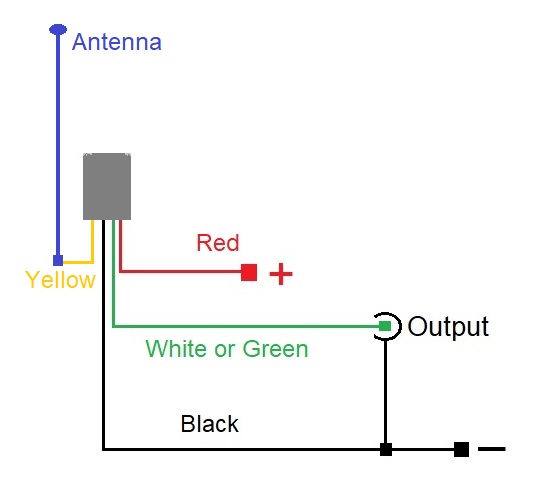
This sensor can detect lighning local or distant, depending on how you set it up. Range from 10 miles to well over 300 miles is possible depending on the length and height of your wire antenna.
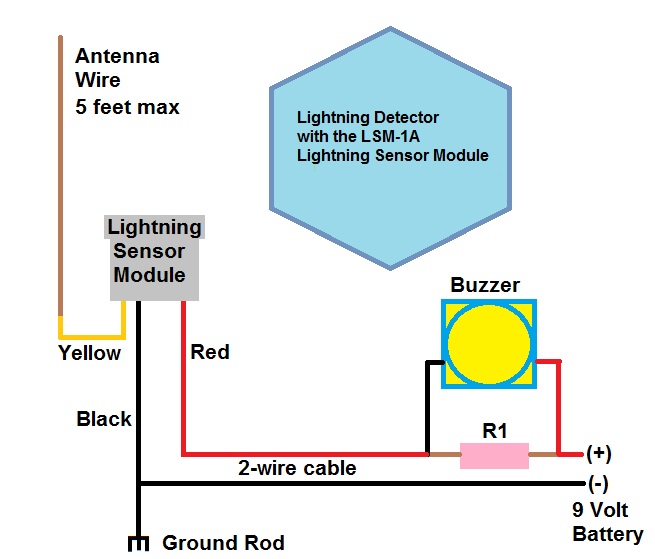
Connect a 9-volt battery. The red wire is (+), the black wire is (-).
Connect the yellow wire to a wire antenna of 36 inches to 102 inches long, placed vertically atleast 5 feet above ground.
Connect the siren or buzzer into the (+) wire like shown.
When lightning is detected, the sensor becomes conductive briefly like an ON-OFF switch allowing battery current to flow thru it, to your indoor buzzer or a siren.
If powering LED lamps, ALWAYS use a 1000 ohm resistor in the line, else the LED lamp will burn out instantly. Do not stare into LED lamps some LED lamps brightness can cause eye damage if LED lamps are not powered at safe brightness.
The receiver is input, output, and electrostatic protected.
You can build the unit into some PVC pipe fittings to give support to the antenna wire, and also to keep moisture out.
There are several versions of this sensor:
The LSM-2 will sound a buzzer 1/10th second "click" for each detection.
The LSM-3 will sound a buzzer 1/100th second (produces a lower volume'click' sound) for each detection. Can be used for counting flashes.
The LSM-4 will sound a buzzer 1/1000th second (produces a 'click' sound) for each detection. For high speed counting up to 1000 flashes per second, for detecting severe weather.
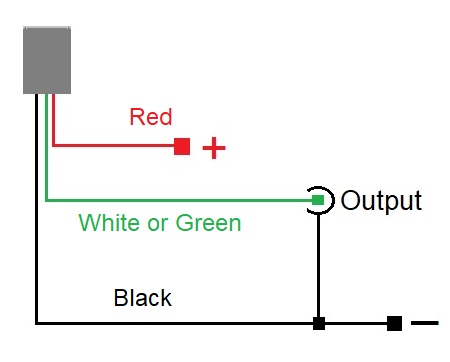
Connect a 9-volt battery. The red wire is (+), the black wire is (-).
Connect the white or green output wire to the input of your audio amplifier. You will hear a loud hiss noise similar sounding to an FM radio between stations. Use it for adjusting speakers, response, EQ response, crossovers, etc.
Outputs 20 Hz - 20 KHz broadband noise.
Connect a 9-volt battery. The red wire is (+), the black wire is (-).
Connect the yellow wire to a wire antenna of 3 feet or longer. Connect the white or green wire to the radio's antenna input.
If your radio does not have an external antenna, but uses instead an internal bar core antenna, then just wrap a few turns around the radio, or make a small coil of about 10 turns of wire and place it near the radio's internal antenna. Find the location of the internal antenna by moving the coil around the outer case, you will hear great improved reception when you find the spot.
Connect a 9-volt battery. The red wire is (+), the black wire is (-).
Connect the yellow wire to a wire antenna of 3 feet or longer. Connect the white or green wire to the radio's antenna input.
If your radio does not have an external antenna, but uses instead an internal bar core antenna, then just wrap a few turns around the radio, or make a small coil of about 10 turns of wire and place it near the radio's internal antenna. Find the location of the internal antenna by moving the coil around the outer case, you will hear great improved reception when you find the spot.
Connect a 9-volt battery. The red wire is (+), the black wire is (-).
Connect the yellow wire to a wire antenna of 3 feet or longer. Connect the white or green wire to the radio's antenna input.

Connect a 9-volt battery. The red wire is (+), the black wire is (-).
Connect the white or green output wire to the antenna input of your radio. You will hear a loud hiss noise similar to an FM radio between stations. Use the noise to make adjustments or measurements, or compare reception between radios, test pre-amps, check tuning of antennas, etc.

Connect a 9-volt battery. The red wire is (+), the black wire is (-).
Connect the white or green output wire to the antenna input of your radio. You will hear a loud hiss noise at the device's frequency similar to an FM radio between stations. Use the noise to make adjustments or measurements, or compare reception between radios, test pre-amps, check tuning of antennas, etc.
These units output a narrow band several hundred Hz wide centered on the frequency of the device.

If you remember the RADIO SHACK miniature Audio Output Transformer and are greatly missing it in your projects(!), This one is so much like it, but is epoxy encapsulated so the wires will not break easily and its also water-proof!
Green-Black-Blue = Primary 1000 ohms, center tapped.
Red-White = Secondary 8 ohms.